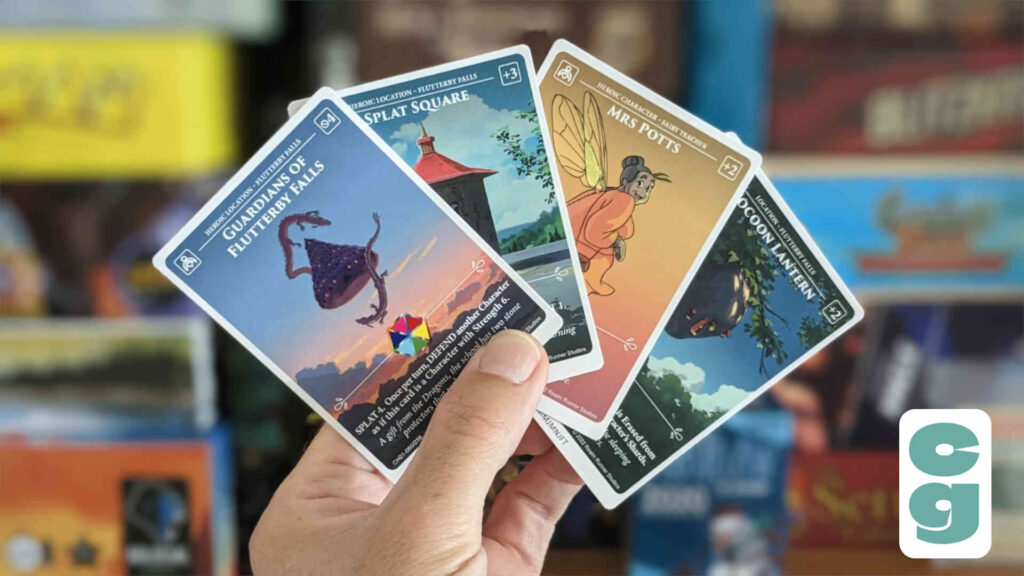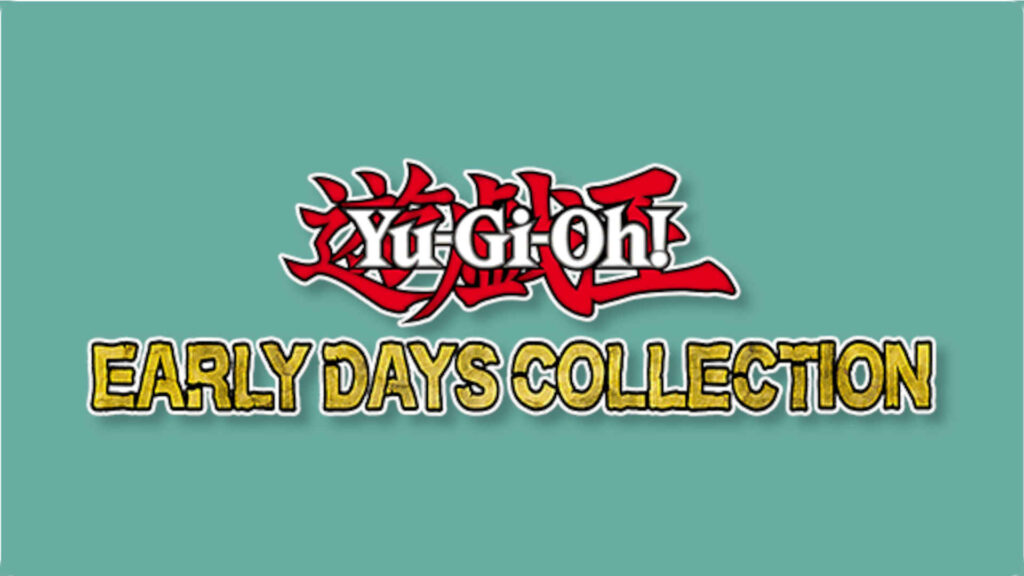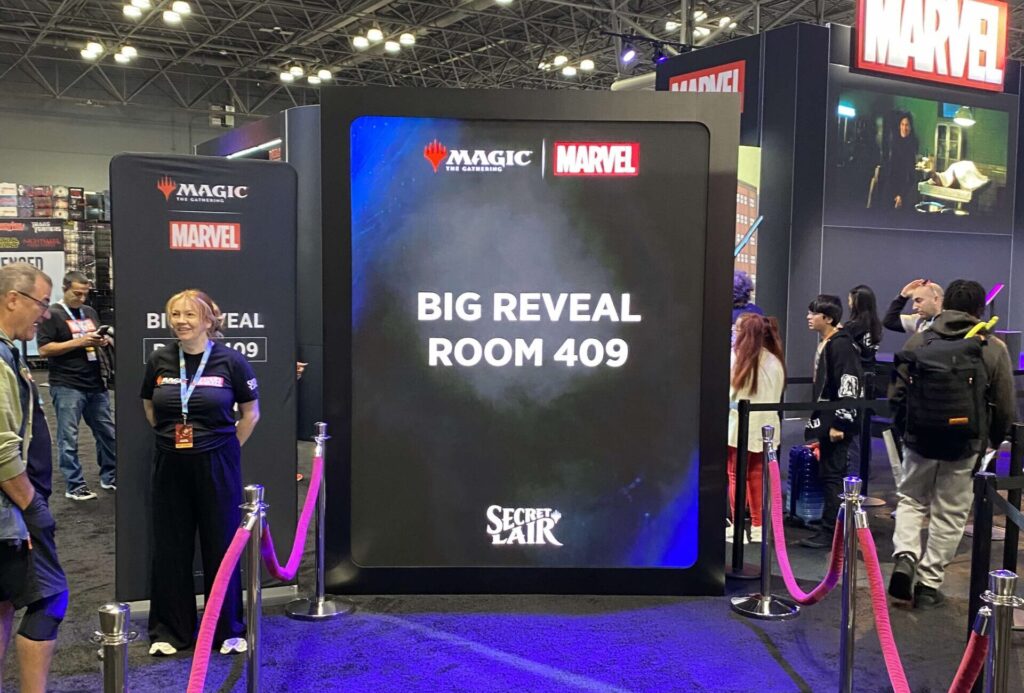It’s time to grab your Palette and deploy to your Canvas – as we take a look at how to play Achroma: The Evolving Card Game!
You may have heard of a new type of card game that’s been quietly building up an active and dedicated player base over the last few years.
Here at Card Gamer, we’re big fans of Achroma and have already mentioned the game in a few articles – but what exactly is it?
Realm Runner Studios have created a genuinely unique and compelling experience with Achroma: The Evolving Card Game.
The first Achroma release, The Curse of Curdle Hill, was launched in 2021 – and the fifth expansion (or ‘Chronicle’, in Achroma parlance) has just been released.
So what makes Achroma different to other Collectable Card Games or Trading Card Games – and how do you play it?
Let’s find out!
Table of Contents
ToggleWhat Makes Achroma Different To CCGs or TCGs?

Though there’s a deck building aspect to Achroma, cards are not sold in random booster packs.
Instead, when a new set is released, it’s comprised of a set number of ‘Palettes’.
A Palette, to the uninitiated, is what a each player’s deck is referred to as in Achroma, which fits with the game’s lore and ink/colour based themes.
When you buy a standard Achroma box for any given set, you’ll be getting your hands on two different Palettes from that set’s selection.
This ensures that you’ll have enough cards to play a two player game with just one box – and there’s no need to be buying random boosters – if you want to add to your collection, there’s full sets of cards from each Chronicle or even full Faction card sets to buy if one particularly takes your fancy.
That’s not all though; Achroma is fully supported by a mobile app that allows you to track your Shards – essentially your energy source during a game – along with your opponent.
This app can help you learn the game, send you off on a narrative adventure and, perhaps most excitingly, track wins and losses of the physical card game, which helps to shape the overall game’s ongoing narrative – which is precisely why it’s known as the Evolving Card Game!
There’s a deep and involving lore behind the game too, which you can dive into via the Achroma website and app – though you’ll also find snippets of the storyline on cards, within the game boxes and even on supplemental materials you can pick up as part of special editions of the game.
There’s also a tabletop RPG on the way – Realm Runner Studios have crafted an intricate, compelling and beautifully designed world for the Achroma game; that passion and care shines through on every product released so far.
How Do I Play Achroma: The Evolving Card Game?
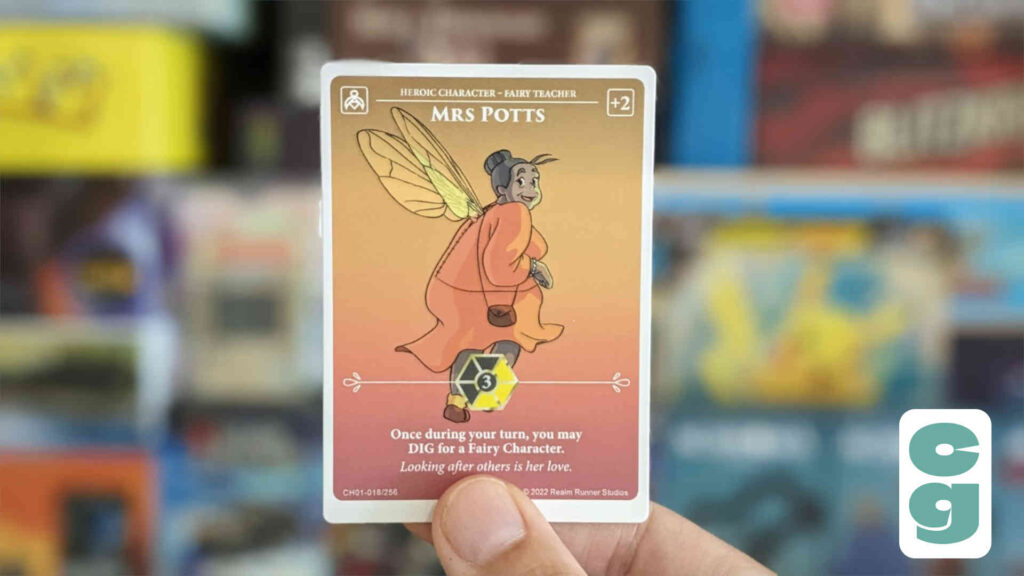
Partly due to the fact that Achroma does evolve over time, with new keywords, clarifications and concepts added as more Chronicles are released – and though you do get a handy turn summary card, along with a quick breakdown of any new or special keywords your Palettes may contain – you won’t find rules inside any box of Achroma cards you buy.
Instead, you’re directed to the app, which can show you around in a few different ways to get you acquainted with the game.
There’s video tutorials and text rules available online, but it’s straightforward enough that we here at Card Gamer can talk you through the basics and get you up and running with Achroma in no time!
1. How To Start Playing Achroma
To start, each player chooses a 30 card deck – or Palette – from either the selection of pre-built decks they have available, or one they’ve put together themselves.
Each player then deals themselves five cards.

If you’re using the Achroma app, one person can start a game – by pressing the Play button on the Achroma Canvas card – then pressing New.
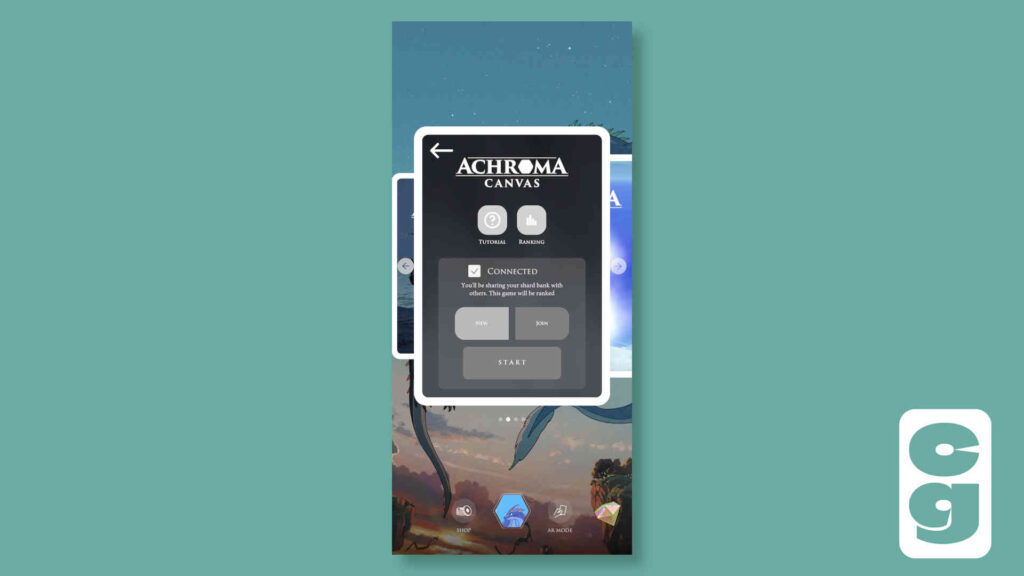
This generates a Game Code, which is shared with their opponent – who chooses Join, instead of New, on the Achroma Canvas menu screen.
This gives the second player a box in which to type the first player’s newly generated Game Code, as below.
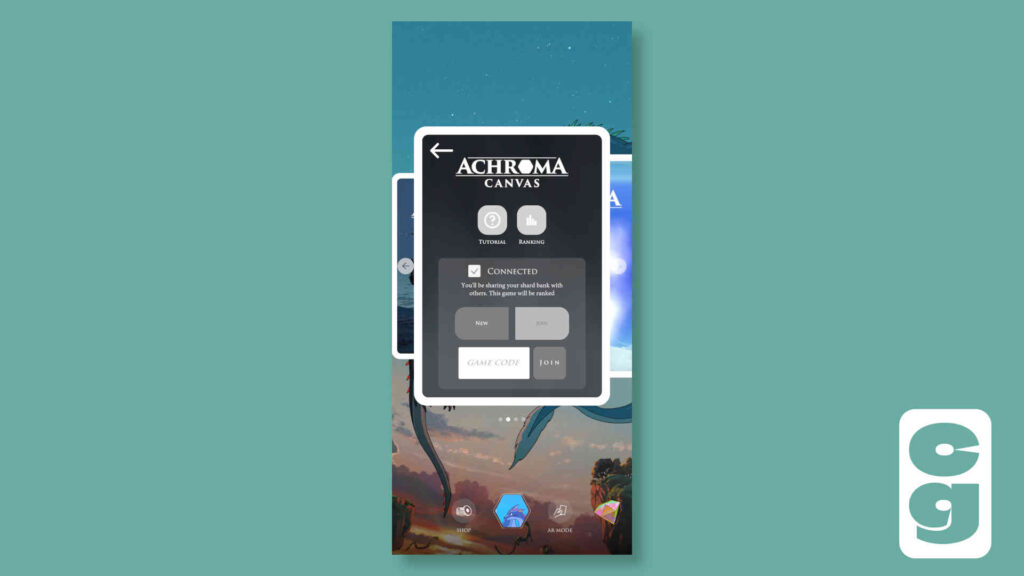
This will link the two apps, so that players are now in the same game together!
Both players begin the game with 10 Shards – which is the currency used to pay to deploy cards, as well as how you win a game of Achroma.
The object of the game is either to reduce your opponent’s Shard total to zero or to reach a total of 30 Shards.
Interestingly, the app itself randomly chooses a player to start – and it’ll automatically let you know who goes first.
The first player’s first turn can be carried out as normal, except they skip their first Draw/Trade step and cannot Drain or Steal Shards from other players until everyone has had their first turn.
2. What Can I Do On My Turn In Achroma?
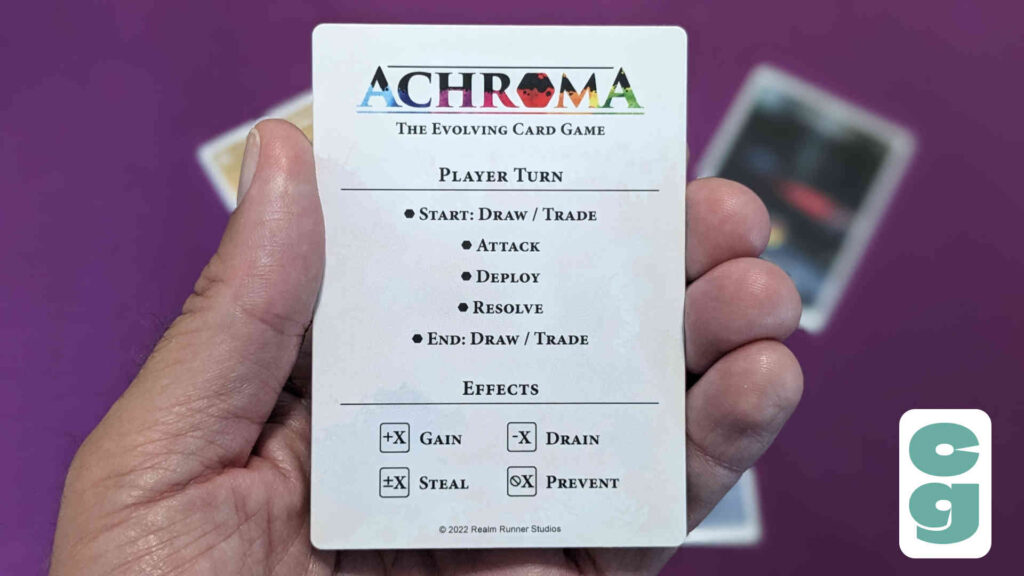
The turn order in Achroma is as follows – the active player carries out each of these steps in order before play passes to the next player:
- Start Step:
The active player chooses whether to draw a card or to trade a card for its Shard value, by placing it in their Dregs (which is the fancily thematic name for the discard pile in Achroma!).
- Main Step:
Players can play up to three cards from their hand to their Canvas (their play area), providing they have the Shards to pay for them in their Shard bank.
Each card has a number of coloured Shards in a hex at the bottom of the card – this is the Shard cost.
Cards can be Characters, Locations, Objects of Power or Actions. Aside from Actions – which can be played at any time on a player’s turn – all other cards are only played during a player’s Main Step.
Characters and Locations are played direct to the Canvas (with any ability marked as ACTION being carried out as soon as the card is deployed to the Canvas).
Objects of Power are attached to Characters.
Actions are played, carried out and then sent to the Dregs.
Attacks also take place during the Main Step, though characters cannot attack on the same turn they’re deployed. Each Character a player controls can attack an opponent’s character (which becomes the defender, if that should be relevant for card text!).
Each character deals damage to each other simultaneously, using the number in the centre of their Shard hex.
For example, if that number is a 4, then it does 4 points of damage to the opponent – which reduces the Shard value of the opponent by 4.
If the Shard value remains above zero, the card stays in play – but the damage remains until the end of the turn, as another character can choose to Attack that card; there’s also the possibility that it can take damage from other sources too.
If the Shard value of a card drops to zero or below, it is sent to its owner’s Dregs.
If a Character is equipped with an Object of Power, the object takes the Shard damage, which rolls over to the Character if any attack damage remains after the object is destroyed and sent to the Dregs.
- Resolve Step:
During this step, players calculate the Shards they can Gain, Drain or Steal from their opponent.
The top right of the card will indicate this, with a box showing a +, – or ± with a number or an X (the card’s text will tell you what the X means).
Each functions as follows:
[+1] – Gain: This means that you can add one Shard to your bank.
[-1] – Drain: This means that you subtract one Shard from your opponent’s bank.
[±1] – Steal: This means that you subtract one Shard from your opponent’s bank and add one to your own bank.
There’s also [Ø1] – which means Prevent. In this example, you’d Prevent the opponent from Stealing or Draining one Shard from you per turn (not per card effect!).
- End Step:
Just like the Start Step, during this step the active player can either Draw a new card from their Palette or Trade one of their cards in hand for its Shard value.
The active player then verbally acknowledges that their turn is complete and the next player takes their turn.
Those are the basics – so, as you can see, Achroma is a pretty straightforward game to learn.
Do note that – as this is just a quick summary of the game’s turns, other questions and clarifications may arise during play – certain keywords on cards, for example, only pop up in certain sets and Palettes.
Achroma’s official website has a more comprehensive and, true to form, evolving overview of the game’s rules.
You can find the official rules at this link. You’ll also find a more comprehensive card anatomy breakdown and even deckbuilding rules there too!
3. Where Should I Start With Achroma?

As with any card game that sees numerous, regular expansions released, it can be difficult to know where to start or how to jump on board.
Though five Chronicles have been released, the easiest way to just jump in with Achroma is by acquiring one of their two-Palette box sets.
Different sets emphasise different keywords and abilities, but in our experience there’s no rise in complexity between them and any set-specific keywords are handily explained on the back of the turn summary card that you’ll find included in the set.
If you do get stuck on any keywords, Achroma’s official website – achroma.cards – is a great resource, as is the Achroma app itself.
4. Where Can I Buy Achroma Cards?
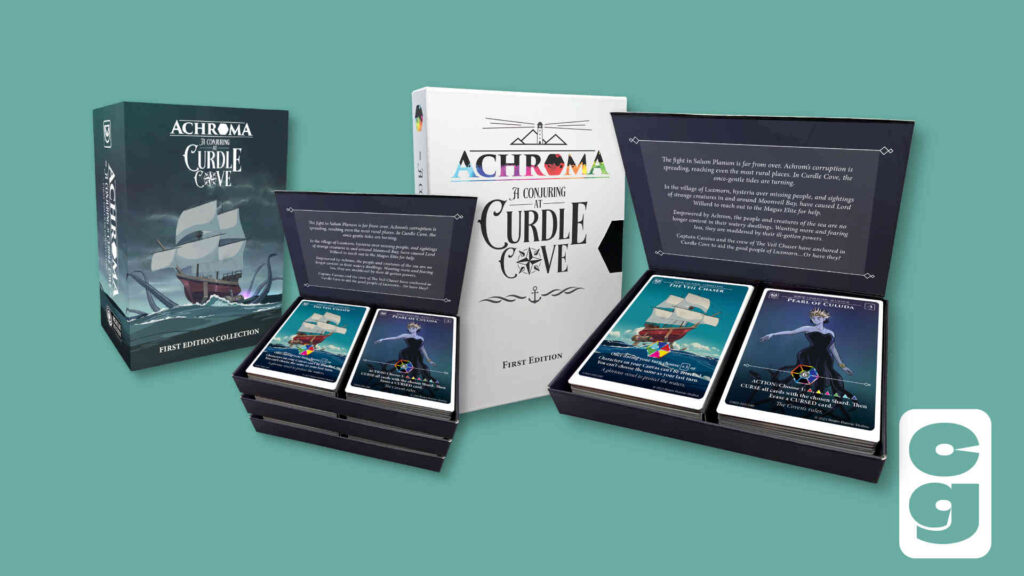
You can get hold of numerous boxes and collections through the official Achroma website – though do be warned that many editions can be somewhat limited!
Realm Runner Studios also have their own physical store, located in Poole – so if you happen to be close by, it’s well worth a visit!
In store tournaments and events are regularly held, so if you end up being a fan of the game, there’s somewhere you can go to find willing opponents and even get your hands on promos, prizes and other goodies!
Realm Runner Studios have built a responsive and dedicated community around Achroma too, so if you find yourself as obsessed with the game and its lore as many of its players do, you’ll find that you’ll be welcomed with open arms.
Despite being from a small publisher and only properly launched a few years ago, Achroma: The Evolving Card Game is incredibly well supported, brilliantly designed and appeals equally to casual as well as competitive players.
Achroma’s gorgeous, Studio Ghibli-esque aesthetic and deep lore makes its universe well worth exploring, both within and outside of the card game – and we’re looking forward to checking out new sets for many years to come!
This article may contain affiliate links. If you use these links to purchase an item we may earn a commission. Thank you for your support.

